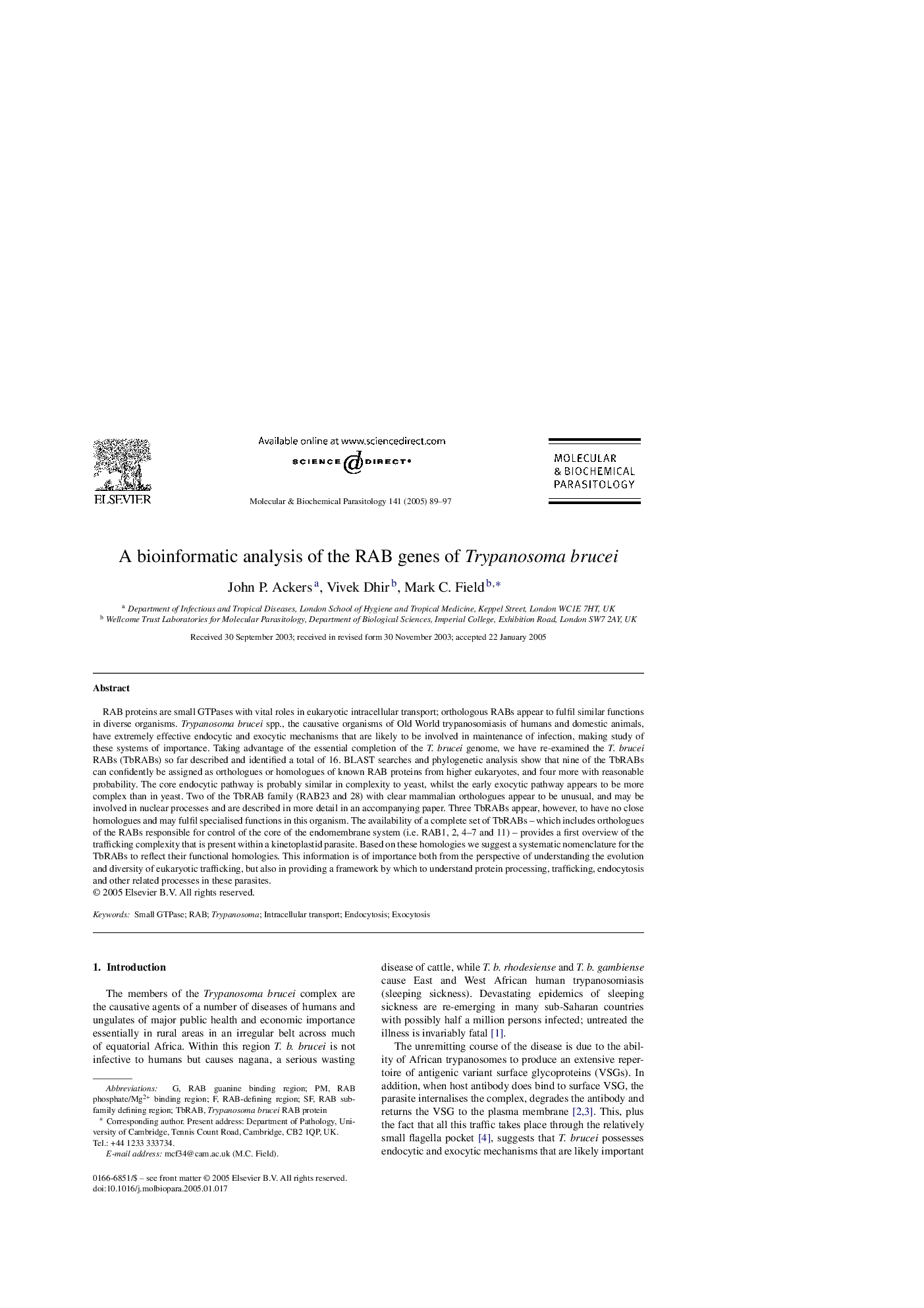| Article ID | Journal | Published Year | Pages | File Type |
|---|---|---|---|---|
| 9140072 | Molecular and Biochemical Parasitology | 2005 | 9 Pages |
Abstract
RAB proteins are small GTPases with vital roles in eukaryotic intracellular transport; orthologous RABs appear to fulfil similar functions in diverse organisms. Trypanosoma brucei spp., the causative organisms of Old World trypanosomiasis of humans and domestic animals, have extremely effective endocytic and exocytic mechanisms that are likely to be involved in maintenance of infection, making study of these systems of importance. Taking advantage of the essential completion of the T. brucei genome, we have re-examined the T. brucei RABs (TbRABs) so far described and identified a total of 16. BLAST searches and phylogenetic analysis show that nine of the TbRABs can confidently be assigned as orthologues or homologues of known RAB proteins from higher eukaryotes, and four more with reasonable probability. The core endocytic pathway is probably similar in complexity to yeast, whilst the early exocytic pathway appears to be more complex than in yeast. Two of the TbRAB family (RAB23 and 28) with clear mammalian orthologues appear to be unusual, and may be involved in nuclear processes and are described in more detail in an accompanying paper. Three TbRABs appear, however, to have no close homologues and may fulfil specialised functions in this organism. The availability of a complete set of TbRABs - which includes orthologues of the RABs responsible for control of the core of the endomembrane system (i.e. RAB1, 2, 4-7 and 11) - provides a first overview of the trafficking complexity that is present within a kinetoplastid parasite. Based on these homologies we suggest a systematic nomenclature for the TbRABs to reflect their functional homologies. This information is of importance both from the perspective of understanding the evolution and diversity of eukaryotic trafficking, but also in providing a framework by which to understand protein processing, trafficking, endocytosis and other related processes in these parasites.
Related Topics
Life Sciences
Biochemistry, Genetics and Molecular Biology
Molecular Biology
Authors
John P. Ackers, Vivek Dhir, Mark C. Field,
